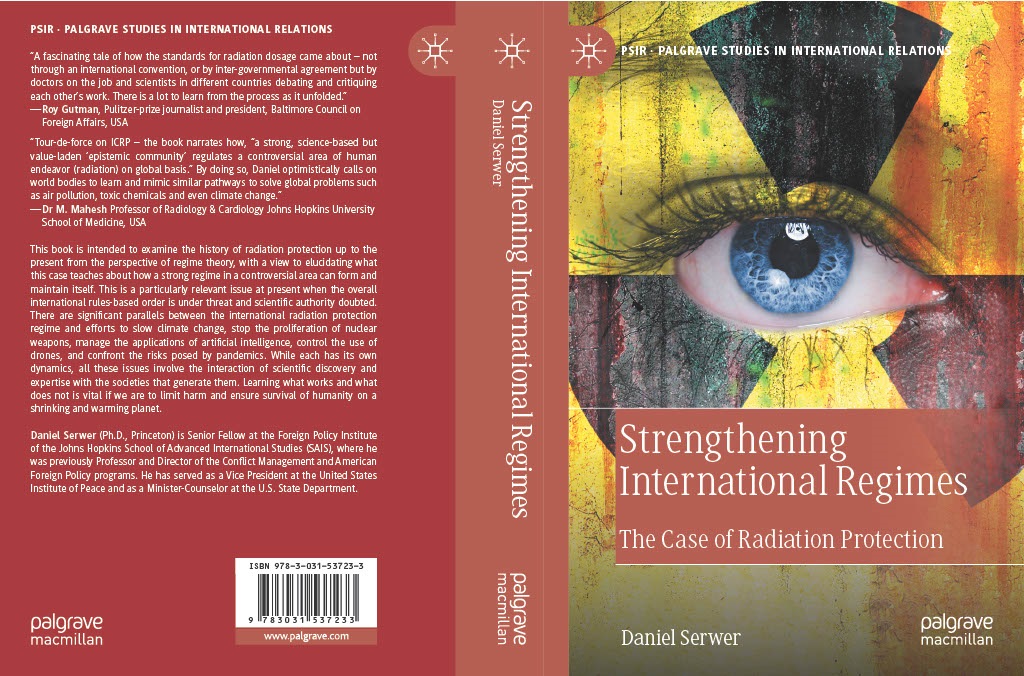Ukraine’s strengths and weaknesses
The Kyiv Security Forum last Thursday and Friday was a crash course in Ukraine’s strengths, weaknesses, opportunities and threats. Here I’ll do the strengths and weaknesses. I’ve already reported on other aspects of my experience here in Kyiv.
Unity and commitment are gaining advantage
Ukrainians, according to Rasumkov Centre surveys, believe in victory. But my conversations suggest that there are some nuances when it comes to defining victory. A minority are prepared to see the territories Russia occupies, especially Crimea, continue for now under Moscow’s rule. But even they would not accept recognition of Russian sovereignty, which would be a violation of Ukraine’s constitution. Trump was foolish to suggest it. Zelensky can’t do it.
Now that the minerals agreement has been signed, the tables are turning in Ukraine’s favor. Washington and Kyiv are more aligned. President Zelensky has reappropriated the language of peace and put the monkey on Putin’s back. He also learned how to manage President Trump. Better to say “yes, but let me suggest something” than to say simply “no.” The Russian economy is sinking. Europe is undergoing a strategic reawakening. And both Europe and the US are seeing the need to deter Russia’s territorial ambitions, which extend beyond Ukraine.
Ukraine as an asset, not a burden
Ukraine, rather than a burden to NATO, is becoming an asset. After independence, it reformed its intelligence services and refocused them on external threats. They have cooperated well with the West. Kyiv has the technology to attack deep inside Russia and the intelligence needed to use it. The Russian intelligence services still focus mainly on domestic repression. They are finding it difficult to plan and execute sabotage operations inside Ukraine. On the battlefield, Kyiv’s more innovative, higher quality weapons are still beating Russia’s advantages in quantity and manpower. Kyiv has also hit Russian proxies and forces in Libya, Sudan, and Syria.
Ukraine has good engineers who are innovating rapidly. Its designers, suppliers, and manufacturers are working closely together. They are bringing innovations to battle more rapidly than the Russians are adapting. The result is a mostly static front with little use of armor and air cover.
NATO last year provided $50 billion in military aid to Ukraine, equaling Kyiv’s own spending. The June NATO Summit in The Hague is an opportunity. The Europeans should make it clear to the US that they are taking on more burden. But still they need the US to supply some advanced weapons and security guarantees.
Disunity is the main weakness
The theme of the Kyiv Security Conference is “United Again.” That already tells you that disunity is an issue. The “again” refers to Allied success in World War II, which ended in Europe 80 years ago.
Within Europe, disunity comes in two forms. Right-wing nationalist governments in Slovakia and Hungary have tied themselves to Russia. And within many other countries right-wing political forces would like to do the same if they come to power. The Alternative for Germany and the National Rally in France are the two most important. This greatly complicates and limits European decision-making on Ukraine. No proposal at the conference received more applause from the participants than spending Russia’s frozen assets on Ukraine’s military needs. But that requires unanimity at least in the EU.
Divisions within the Alliance
Divisions within NATO are also important. President Trump is erratic. Europe is increasing its defense expenditures and is getting ready to deploy peacekeepers if negotiations succeed. But Trump could fail to provide needed assistance to Ukraine, or even betray it by returning to his pro-Putin stance. Despite some signs of a shift, US pressure on Moscow to negotiate is still minimal. The American negotiator, Witkoff, is unprepared for the task and lacks an serious team. Trump has given Putin far too many carrots. He still hopes to relieve sanctions on Russia and wean it from China, a fool’s errand.
Standardization within the Alliance is weakly implemented. While grenades are standardized in size, in practice the Alliance still produces 14 different ones. In both Europe and the US, military production capacity is inadequate. Neither has been willing to fund military production in Ukraine, which has excess capacity. With financing, it could produce twice as many drones as it does today. Europe has lots of soldiers, but few ready to deploy into conflict. Moscow knows this. It also knows the US wants to reduce its presence in Europe.
Russia won’t do what it says it will do
In thinking about a negotiated outcome to the war, one thought prevails among the Ukrainians, European, and Americans here. Whatever the strengths and weaknesses on the Ukrainian side, Moscow will not implement whatever it signs. The best that can be hoped for is a pause in the war. Conference participants believe Putin is serious about taking control of all of Ukraine. The question is whether Russia or Ukraine would gain more from an opportunity to rest and rearm. My sense is the Ukrainian military thinks Russia would gain more, since it has deeper resources and a bigger population. Some Ukrainian civilians think a pause would refresh political support for the war.




 RSS - Posts
RSS - Posts

0 thoughts on “Ukraine’s strengths and weaknesses”